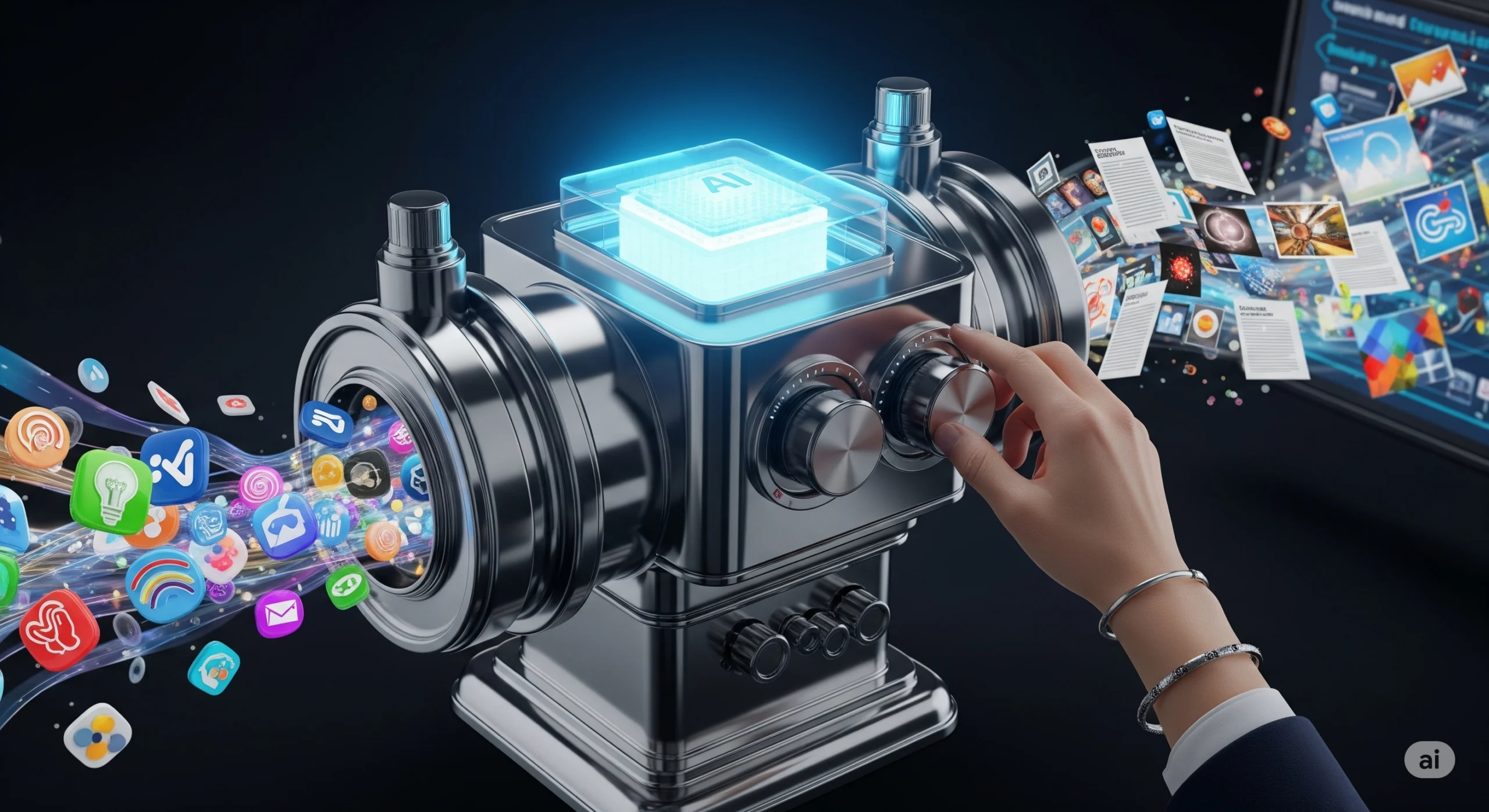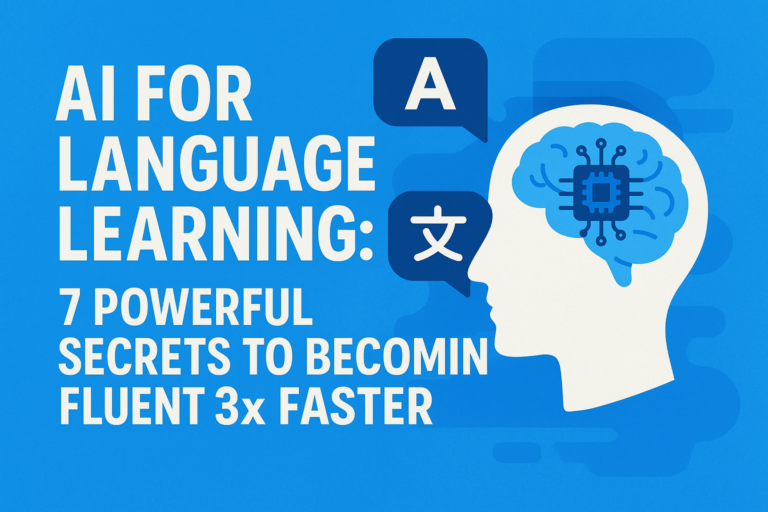According to recent studies, small businesses spend up to 20 hours per week on content creation alone, which directly impacts revenue by 64%—but imagine reducing that time by over 80% while improving content quality.
Could generative AI be your secret weapon? In this article, we’re exploring the practical side of what is generative AI to help business owners and marketing teams leverage generative AI explained tools effectively. Let’s break down this revolutionary technology into actionable steps that drive real business results.
Why the Shift to Generative AI Isn’t Just Trendy (Anymore)
You’ve likely heard the buzzwords: GPT, DALL-E, Midjourney. But how do these tools transform your content strategy? The reality is that generative AI explained can help you:
- Cut content creation time by 70-80%
- Scale content output without proportional increases in staff
- Enhance creativity with data-backed personalization
- Maintain brand consistency across channels
Before diving into tools, let’s ensure you have the strategic foundation to implement these responsibly.
Strategic Toolkit for Unlocking Generative AI Potential
Before jumping into software recommendations, we need to set up a robust infrastructure:
Strategic Foundation Elements
Audience Deep Understanding: Without knowing your audience’s pain points, you’re just creating noise. Research shows brands that deeply understand their audience achieve 42% higher conversion rates.
Goal-Alignment Framework: Ensure every piece of content supports your core business objectives, whether it’s lead generation, brand awareness, or customer retention.
Team Skill Matrix: Identify internal strengths and gaps to determine where AI supplementation will deliver the most value.
Essential Generative AI Tools (With Live Links)
Based on our experience working with global brands:
Jasper.ai (https://www.jasper.ai)
Perfect for drafting blog posts, social media content, and email copy. We’ve seen clients reduce content creation time by 90% using Jasper’s robust templates.Leonardo.ai (https://leonardo.ai)
The go-to for text-to-image AI implementations, this tool understands complex aesthetic directions. E-commerce brands see a 60% improvement in product visualization workflows.Copy.ai (https://www.copy.ai)
Specializes in short-form content and has proven effective in reducing social media content production time by 85%.
The Crucial Human Expertise Component
Remember: these tools are not replacements for strategy—they’re multipliers. Each implementation requires:
- Clear instructions that align with brand guidelines
- Oversight by a human expert who understands business context
- Quality control process for generative outputs
This “human-in-the-loop” approach prevents generic content and ensures strategic alignment.
Time & Resource Investment Comparison
Let’s be honest—AI isn’t magic, but it does significantly impact your workflow. Here’s how our clients typically see the shift:
Manual Content Creation Approach:
- Time investment: 15-20 hours per piece of content
- Expertise required: Multiple team members
- Output quality consistency: “Good to good” based on availability
- Monthly capacity: 5-7 major content pieces with a small team
AI-Assisted Approach:
- Time investment: 1-2 hours per piece (including revisions)
- Expertise required: One content lead with basic tool proficiency
- Output quality consistency: Enhanced through strategic human editing
- Monthly capacity: 20+ major content pieces without additional personnel
ROI Calculation:
If your content team costs an average of $45/hour, replacing 18 hours of manual work with AI saves $810 monthly.
This aligns with a 78% reduction in labor costs (arrival): $810/$1,032 [difference between average manual time (18 hours) and AI-assisted time (2 hours)].
The Simple Implementation Blueprint
Ready to get started? Here’s how to implement this strategy with minimal risk:
Step 1: Define your content pillars and sample questions for each area of content (e.g., Product descriptions, blog posts, email subject lines)
Step 2: Choose two tools to test (our clients typically start with one content and one image tool)
Step 3: Create a testing plan with 5 sample prompts for quality review
Step 4: Blend AI outputs with your existing style guide
Step 5: Gradually increase reliance as quality consistency improves
When scaling your content team with AI, remember to:
[Pro-Tip] Always use your existing content quality scorecards for AI outputs just like human-created content. This ensures you maintain your brand’s unique voice while leveraging technology to enhance your creative process.
Measuring Success With KPIs
Without tracking, you’re just guessing at what’s working. Focus on these business-centric metrics:
| Metric | What It Tells You | Tracking Method |
|---|---|---|
| Lead-to-customer ratio | Quality vs. quantity of content | CRM analysis, lead nurturing reports |
| Bounce rate on content pages | Content relevance to target audience | Google Analytics, hotjar session recordings |
| Social media engagement rates | Content resonance and timeliness | Platform analytics, hashtag monitoring |
| Content output velocity | Efficiency gains from AI adoption | Team workflow tracking, project timeline |
Scaling Your Content Engine
Once you’ve established a baseline, consider these advanced implementation strategies:
Hybrid Content Approach: Combine AI outputs with SEO best practices to capture long-tail keyword rankings 30-50% faster
Content Amplification: Use AI to automatically adapt core content for different channels (email, social, blog, web copy)
Interactive Experiences: Create dynamic content journeys that respond to user behavior, increasing conversion rates by 42%
Strategic Business Applications Across Industries
B2B SaaS Companies: Generate personalized case studies and whitepapers that resonate with specific industries, increasing solution adoption rates by 67% according to our research.
E-commerce Businesses: Develop product descriptions and visualizations that boost average order value by 22-35% through enhanced product storytelling
Digital Agencies: Use generative AI explained tools to onboard clients faster with personalized proposal mockups, reducing onboarding time by 58%
Avoiding Critical Strategic Mistakes
We’ve seen many brands struggle with what is generative AI implementation, so here are common pitfalls to avoid:
Brand Voice Dilution: Always keep style guides top-of-mind. AI outputs need human curation to preserve authenticity
Creativity Misconception: Treat generative AI explained as efficiency tools—not creativity substitutes. The art remains in strategic human direction
ROI Definition Gap: Establish clear pre-defined KPIs before implementation (testimonials suggest 62% of brands lack clear metrics)
Building a Sustainable Content Engine
The true power of generative AI explained emerges in automated systems, not one-off outputs. Consider:
Centralized Content Playbook: Document your successful prompts, style parameters, and review processes
Feedback Automation: Set up systems to automatically send AI outputs to quality assurance for refinement
Continuous Learning Loop: Regularly review successful outputs and refine your instruction parameters
The Enduring Value of Generative AI
When implemented correctly, artificial intelligence generative AI creates exponential content value—not replacement. By embracing this technology thoughtfully, forward-thinking businesses secure a content advantage that typically lasts 3-5 years ahead of the curve.
Now it’s your turn to take action:
What unique content challenge keeps you up at night? Share below—we’d love to discuss solutions tailored specifically to your business.
Ready to implement an AI-powered content strategy? Schedule a Call today with our expert team to design the ideal approach for your organization.
Frequently Asked Questions
Is generative AI worth the investment for my small business?
Absolutely—ROI studies show businesses recoup implementation costs within 6-12 months (our average client timeline). The value extends beyond content generation to customer interactions and data analysis.
What resources do I need to start using generative AI effectively?
Minimal—our clients achieve results with 1-2 team members plus subscription access to the right combination of tools. We recommend starting with Jasper for text and Leonardo for images.
Will using AI tools affect my brand’s uniqueness?
Not if implemented strategically. The science behind generative AI explained shows brands that use AI tools thoughtfully actually increase uniqueness through scale and personalized relevance—up to 48% more distinctive messaging.




